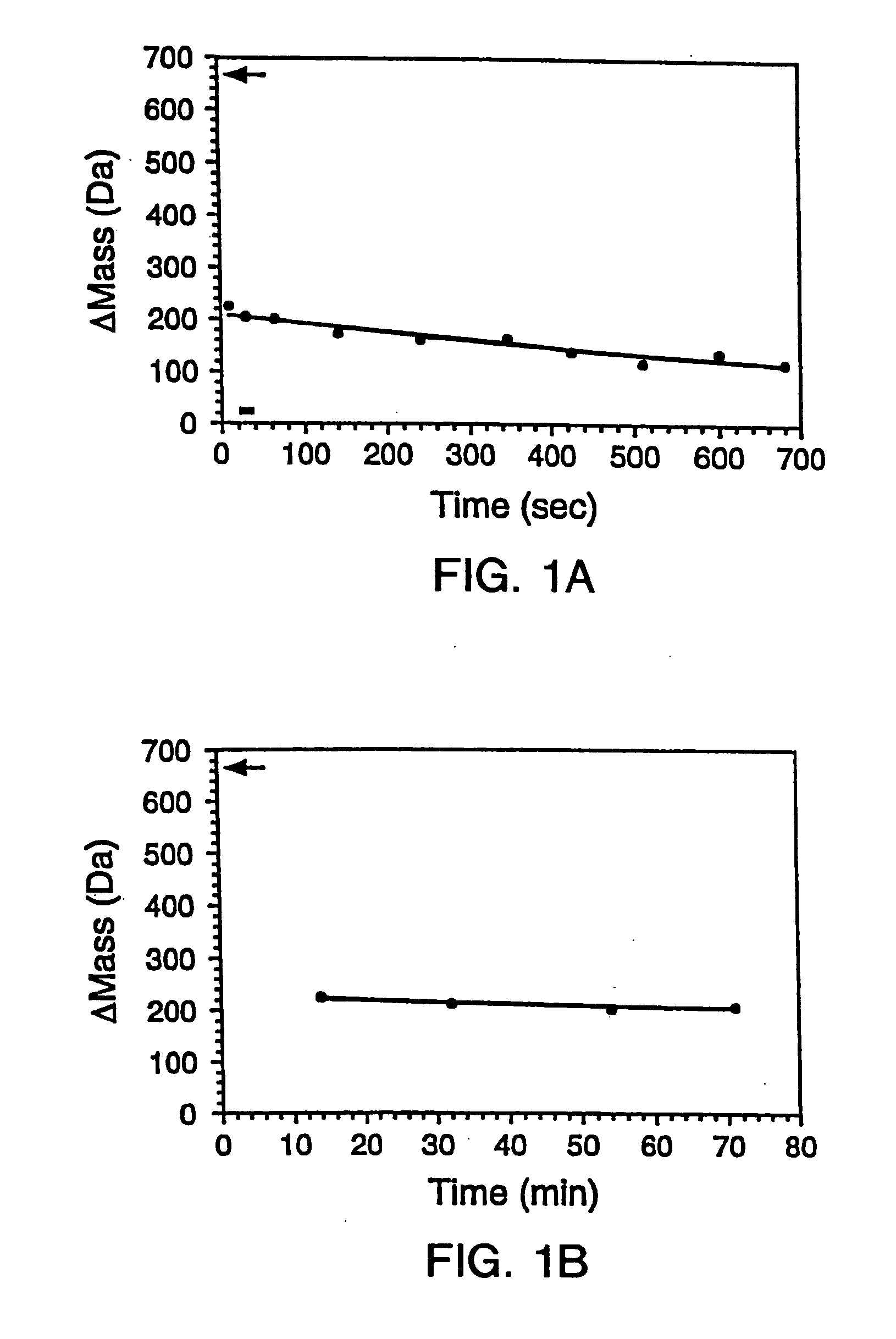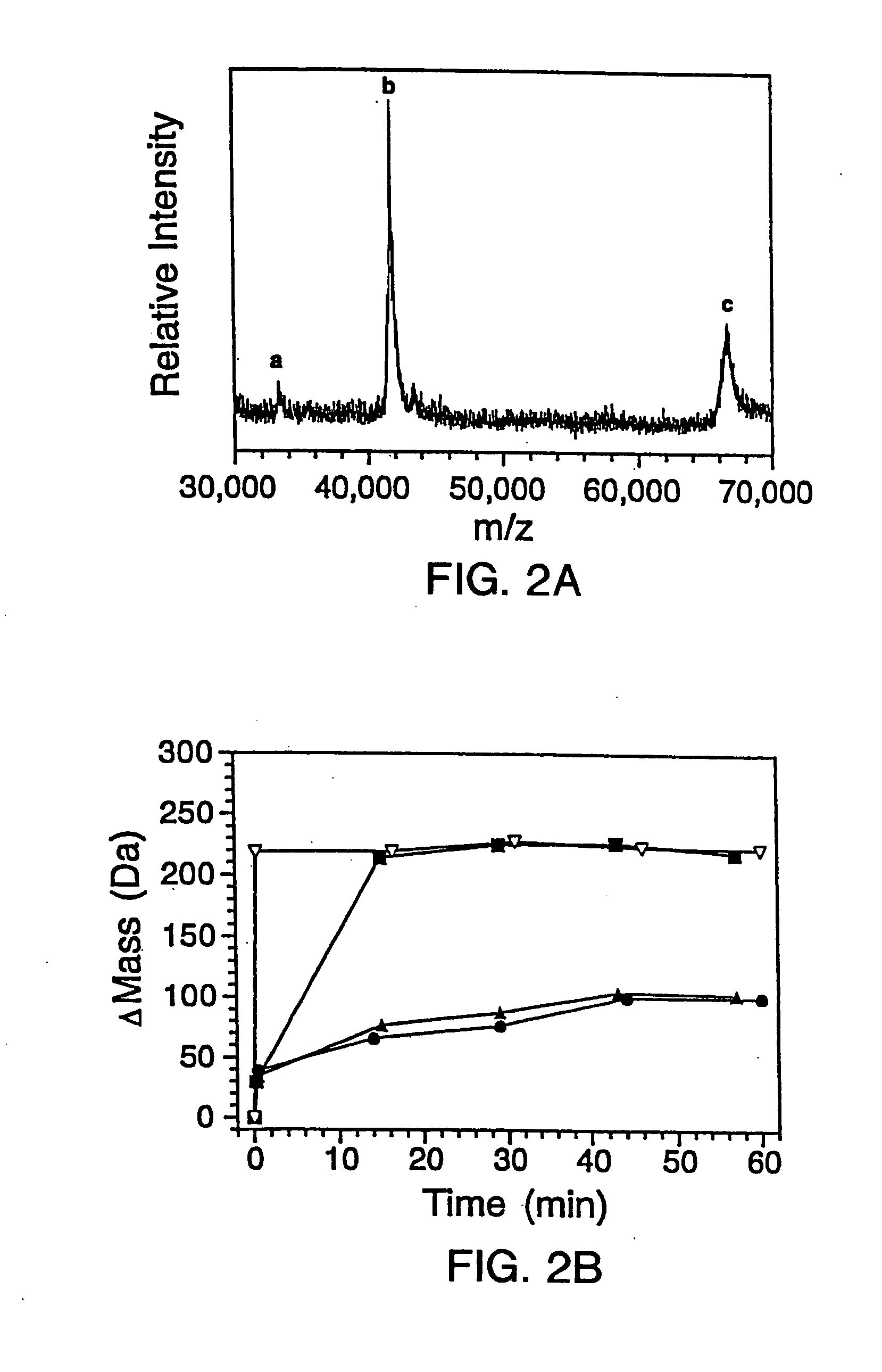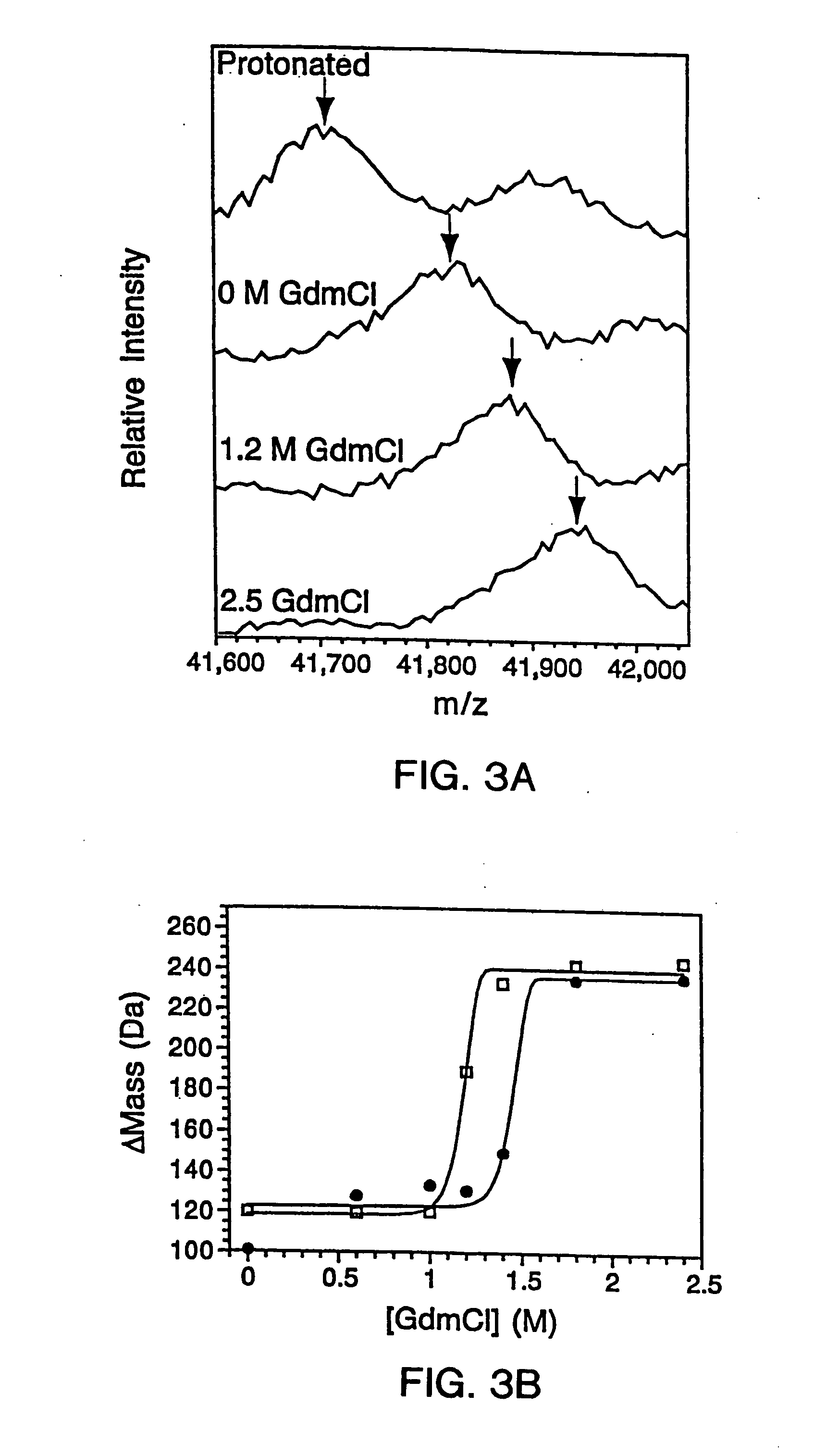Quantitative, high-throughput screening method for protein stability
a protein stability and quantitative analysis technology, applied in the field of protein stability screening, can solve the problems of not being able to disclose the quantitative analysis of native-like proteins, unable to meet the needs of stability measurement, and currently necessitate time-consuming experiments with pure protein samples, etc., and achieve the effect of changing the stability of the test protein
- Summary
- Abstract
- Description
- Claims
- Application Information
AI Technical Summary
Benefits of technology
Problems solved by technology
Method used
Image
Examples
example 1
Laboratory Example 1
Quantitative, High-Throughput Screen For Protein Stability
[0287] 1.A. Sample Preparation
[0288] The gene encoding maltose binding protein or λ6-85 was cloned into a T7 expression vector and expressed in E. Coli strain BL21-(DE3). 200 μL LB cultures of the recombinant E. Coli were grown in 96 well plates and induced by the addition of 0.4 mM isopropylthio-β-D-galactosidase (IPTG). The cells were subsequently pelleted and lysed by suspension in 10 μL BUG BUSTER™ solution (Novagen, Inc., Madison, Wis.). The lysates were centrifuged and the supernatant was used for hydrogen exchange experiments without any further manipulation. SDS-PAGE indicated that the crude samples comprised ˜10%-50% expressed protein in a background of cellular impurities. From the gel, the concentrations of the proteins were estimated to range between 50 to 500 μM.
[0289] 1.B. Hydrogen Exchange
[0290] Hydrogen exchange was initiated by adding 10-fold excess deuterated exchange buffet (20 mM so...
example 2
Laboratory Example 2
SUPREX as a Tool for Measuring Protein-Protein Binding
[0300] 2.A. Mutagenesis And Protein Expression
[0301] The genes for the B1 domain (Q32C) and its mutants were constructed as previously described (Sloan & Hellinga, (1999) Protein Sci. 8: 1643-48) and cloned in the pKK223 expression vector (Pharmacia, Peapack, N.J.). Mutations were constructed in the Q32C (WT*) background. The plasmids were transformed into XL1-Blue E coli and grown in 10 mL cultures of LB media containing 100 μg / mL ampicillin. Expression was induced by the addition of 0.4 mM isopropylthio-β-D-galactosidase (IPTG). The cells were subsequently pelleted and lysed by suspension in 500 μL of BUG BUSTER™ solution (Novagen, Inc., Madison, Wis.). The lysates were centrifuged and the supernatant was used for hydrogen exchange experiments without any further manipulation. SDS-PAGE indicated that the crude samples consisted of ˜30%-40% expressed protein in a background of cellular impurities. The exact...
example 3
Laboratory Example 3
SUPREX as a Tool for Measuring Protein Stabilities in Vivo
[0310] The G46A / G48A thermostable variant of monomeric lambda repressor (λ6-85) (Burton et al., (1996) J. Mol. Biol. 263: 311-22) was over-expressed using a T7 vector in E. coli in H2O-based media. To initiate hydrogen exchange, the bacteria were transferred to a deuterated media. Time-course studies indicated that under these conditions the D2O freely diffuses across the cell membrane and the solvent deuterons exchange with labile protons of the protein within the cytoplasm of the cell. Chloramphenicol was added to the deuterated media in order to inhibit further protein synthesis during the course of the exchange reaction, thereby preventing deuteration during synthesis. The E. Coli cells were then lysed and the extent of exchange determined using MALDI mass spectrometry to measure the increase in mass, as generally depicted in the schematic of FIG. 8.
[0311] 3.A. Sample Preparation
[0312] In vivo exper...
PUM
| Property | Measurement | Unit |
|---|---|---|
| mass | aaaaa | aaaaa |
| mass gain | aaaaa | aaaaa |
| pH | aaaaa | aaaaa |
Abstract
Description
Claims
Application Information
 Login to View More
Login to View More - R&D
- Intellectual Property
- Life Sciences
- Materials
- Tech Scout
- Unparalleled Data Quality
- Higher Quality Content
- 60% Fewer Hallucinations
Browse by: Latest US Patents, China's latest patents, Technical Efficacy Thesaurus, Application Domain, Technology Topic, Popular Technical Reports.
© 2025 PatSnap. All rights reserved.Legal|Privacy policy|Modern Slavery Act Transparency Statement|Sitemap|About US| Contact US: help@patsnap.com



